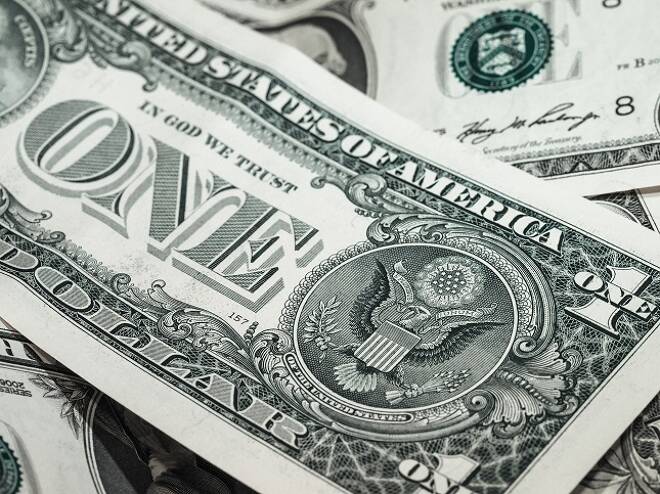Advertisement
Advertisement
U.S. Dollar Index (DX) Futures Technical Analysis – Trend Changed to Up, but Follow-Through Buying Was Weak
By:
The change in trend to up wasn't very impressive. This suggests that buy stops rather than new buyers may have triggered the move.
The U.S. Dollar climbed to a three-week higher against a basket of currencies on Tuesday, helped by losses in sterling on renewed worries about Brexit as well as investors’ aversion to risk amid a sell-off on Wall Street.
Perhaps exerting the most upside pressure on the dollar index was a weaker Euro. The single-currency fell to a two-week low versus the dollar ahead of the European Central Bank’s post-summer meeting later in the week.
Earlier in the session, Euro Zone data also showed its economy shriveled by slightly less than initially estimated in the second quarter, but the drop was still the sharpest ever as consumer spending caved in due to COVID-19 restrictions.
At 17:27 GMT, September U.S. Dollar Index futures are trading 93.295, up 0.576 or +0.62%.
The British Pound fell to a four-week low against the dollar on Tuesday as investors repriced a no-Brexit deal. Britain had gone into Tuesday’s fresh round of Brexit trade talks warning it was ramping up no-deal preparations. A sense of crisis took hold as the Financial Times reported the head of Britain’s legal department had quit over suggestions Boris Johnson wanted to override parts of the existing divorce deal.
Daily Swing Chart Technical Analysis
The main trend is up according to the daily swing chart. The trend changed to up earlier on Tuesday when buyers took out the last main top at 93.480. A trade through 91.725 will change the main trend to down.
The short-term range is 93.980 to 91.725. Its 50% level at 92.855 is potential support.
The main range is 97.810 to 91.725. Its retracement zone at 94.770 to 95.490 is a potential upside target.
Short-Term Outlook
The main trend may have turned up on Wednesday, but it failed to attract enough buyers to extend the rally. This suggests that buy stops rather than new buyers may have triggered the move. It may also mean that the market has to pullback for a few days in order to form a support base.
The true breakout to the upside many not occur until buyers are able to take out tops at 93.895 and 93.980.
The first leg up after a massive sell-off is usually fueled by short-covering and profit-taking. Professionals don’t try to pick bottoms. When the short-covering is over, the market usually corrects about 50% of the first leg up. That’s the move we’ll be looking for. We want to see a pullback in order to set up a secondary-higher bottom.
Professionals like to buy when they have a “lean” or an exit. At the bottom, there is no “lean”, but if there is a successful formation of a secondary higher-bottom then real buyers may step in, using a break under 91.725 as their exit.
For a look at all of today’s economic events, check out our economic calendar.
About the Author
James Hyerczykauthor
James is a Florida-based technical analyst, market researcher, educator and trader with 35+ years of experience. He is an expert in the area of patterns, price and time analysis as it applies to futures, Forex, and stocks.
Did you find this article useful?
Latest news and analysis
Advertisement
